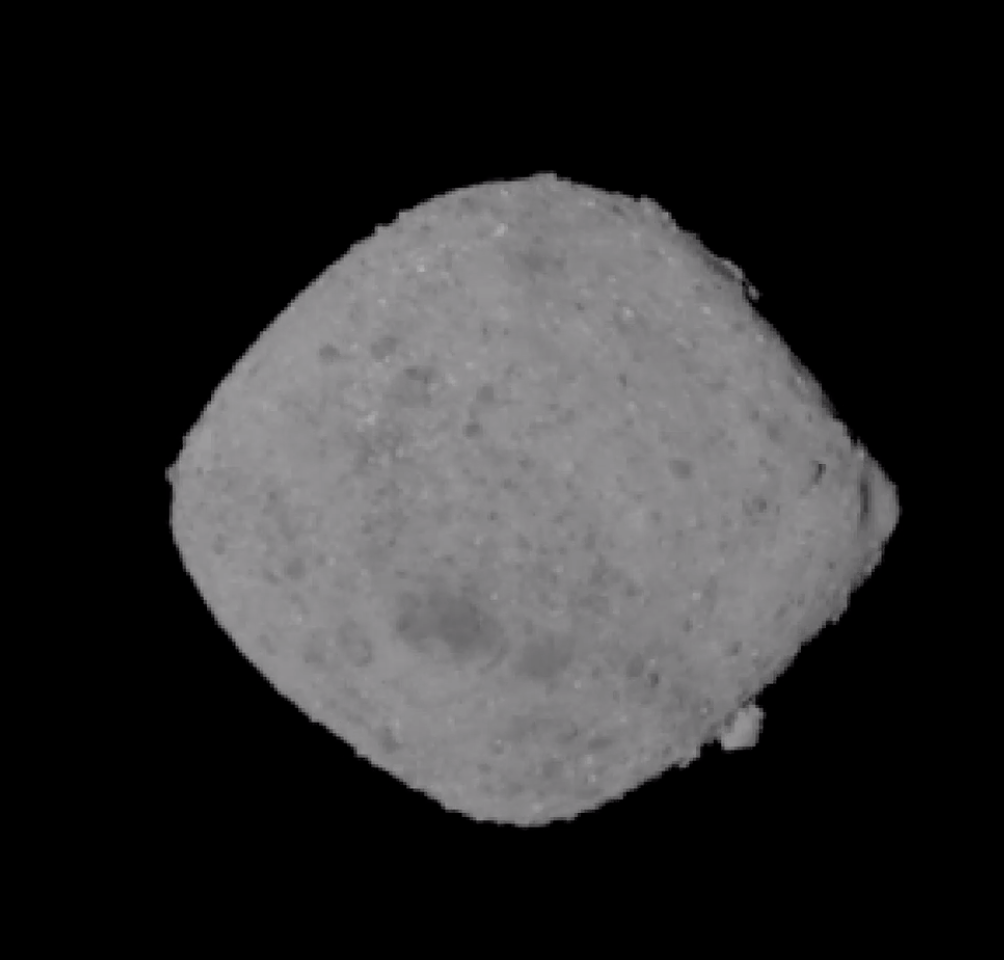As the Asteroid Turns: NASA Probe Snaps Video of Spinning Bennu
The diamond-shaped asteroid Bennu has a boulder "witch mole" and a whole lot of other lumps and bumps, a gorgeous new video reveals.
The photos that make up the video were captured last Friday (Nov. 2) by NASA's OSIRIS-REx spacecraft, which has nearly caught Bennu after a two-year chase that began with the probe's September 2016 launch.
"We've now been able to see asteroid Bennu from all sides! The @OSIRISREx PolyCam camera captured an image of every 10 degrees of Bennu's rotation over a four-hour-and-11-minute period on Nov. 2. These images were taken at about 122 miles from the spacecraft," officials at NASA's Goddard Space Flight Center in Greenbelt, Maryland, said via Twitter on Tuesday (Nov. 6). [OSIRIS-REx: NASA's Asteroid Sample-Return Mission in Pictures]
And in another recent set of images from OSIRIS-REx, the 1,640-foot-wide (500 meters) Bennu comes into increasingly sharp focus as the spacecraft makes a gradual approach.

While folks on Earth were fine-tuning their Halloween costumes, the OSIRIS-REx PolyCam was using its long-range capabilities to take almost daily shots of Bennu as it emerged from the murky darkness of space. The sequence, published on Nov. 2 by NASA, includes a total of 16 images.
PolyCam snapped the first image of Bennu in this sequence on Oct. 12 from a distance of 27,340 miles (44,000 kilometers), which is longer than a full lap around Earth's equator. OSIRIS-REx took the sequence's final image on Oct. 29 from about 200 miles (320 km), or roughly the distance between Washington, D.C., and New York City.

If all goes according to plan, OSIRIS-REx will arrive at Bennu on Dec. 3, then slip into orbit around the asteroid on Dec. 31. The probe will study the asteroid up close for about two years, and swoop down to snag a sizable sample from its surface. This material will come to Earth in a sample-return capsule in September of 2023.
Get the Space.com Newsletter
Breaking space news, the latest updates on rocket launches, skywatching events and more!
Researchers around the world will then pore over the sample, looking for clues about the solar system's early days and the role that carbon-rich asteroids such as Bennu may have played in delivering life's building blocks to Earth.
The $800 million OSIRIS-REx mission also has several other subsidiary goals, as indicated by its full name — Origins, Spectral Interpretation, Resource Identification, Security-Regolith Explorer.
Follow Doris Elin Salazar on Twitter@salazar_elin. Follow us @Spacedotcom or Facebook. Originally published on Space.com.
Join our Space Forums to keep talking space on the latest missions, night sky and more! And if you have a news tip, correction or comment, let us know at: community@space.com.

Doris is a science journalist and Space.com contributor. She received a B.A. in Sociology and Communications at Fordham University in New York City. Her first work was published in collaboration with London Mining Network, where her love of science writing was born. Her passion for astronomy started as a kid when she helped her sister build a model solar system in the Bronx. She got her first shot at astronomy writing as a Space.com editorial intern and continues to write about all things cosmic for the website. Doris has also written about microscopic plant life for Scientific American’s website and about whale calls for their print magazine. She has also written about ancient humans for Inverse, with stories ranging from how to recreate Pompeii’s cuisine to how to map the Polynesian expansion through genomics. She currently shares her home with two rabbits. Follow her on twitter at @salazar_elin.










